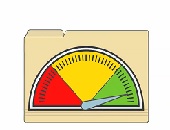How does an investor approach the problems of hiring and firing the investment manager firm (I.M.)? “In general, the first thing is to understand who you are as a business,” advises Sidney Hardee, Managing Partner of Hardee Brothers, LLC. “You must understand this thoroughly before engaging an investment manager.” He was the sole presenter of the one-hour webinar “Hiring and Firing Investment Managers” sponsored by the Chartered Financial Analysts Institute on January 15, 2020.
Characteristics of the I.M.
What are the characteristics of a good investment manager firm?
Organizational stability is key, Hardee said. “What is the structure of this organization, and how committed are they to what they’re doing?” Get to know who the investment officer is. “This is even more important for the firing decision, because if an important manager is leaving the firm, that could create organizational instability.”
During the Q&A part, Hardee was probed further about evaluating organizational structure of the I.M.. He replied he looks for “grown-ups in strategic positions.” How is risk management handled? “I want to see a level of expertise… I want to see you are meeting your obligations.”
The investor should look at the track record and performance cyclicality of the I.M. firm. The investor “can identify the track record,” he said, “and can verify.” The investor should also identify if there is any tendency to cyclicality. “What is the particular market where the investment manager performs best?”
Holdings-based attribution is a factor in the hiring/firing decision, Hardee noted. “I want to see, at a granular level, how the holdings contribute to the performance.” The investor should observe whether the I.M. is consistently underperforming in certain sectors.
Be on the look out for peer group problems, Hardee advised. “I want to see how the existing manager is doing, in a quantifiable way, relative to his peers.”
“Know your benchmark,” he said. Some benchmarks combine market index and volatility level. “I have to understand the benchmarking—it must be basic and clear.” One reason for firing an investment manager is if they are moving away from the benchmark they claim to be using—what’s known as style drift. This can result simply from capital appreciation and lack of rebalancing the portfolio.
Policy violations and style drift are two more reasons to fire the I.M. “I want the compliance team to focus on individual buckets,” he said, “to make sure it’s a conversation you never have to have, regarding policy violation or style drift.”
During the Q&A period, he said that, even if an I.M. claims to be “agnostic” in style, Hardee wants to assign it to a style bucket. “Absolute return is also a style,” he added.
Available alternatives to financial products are legion. “It’s very important for the allocator to seek out new ideas and new products,” he said. “You should build on the ability to adapt to new disruption. There are many new and productive ways of generating alpha.” ♠️
Click here to view the one-hour webinar presentation.
Click here to read about the second part of this presentation.



